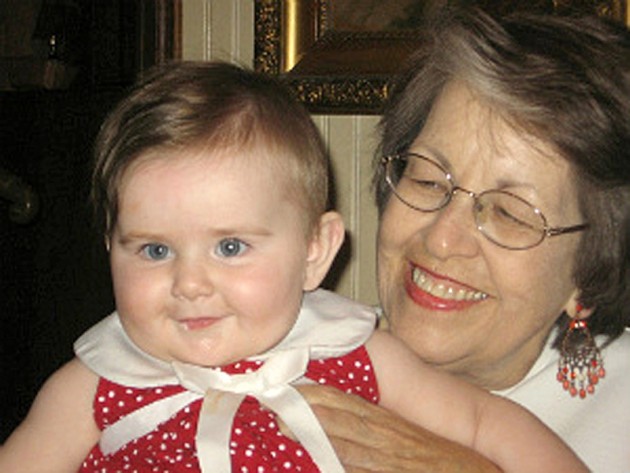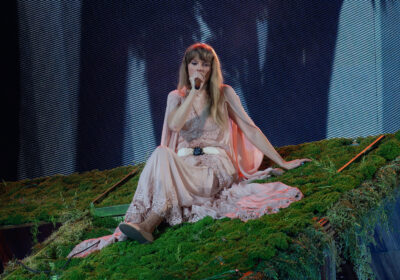An important ‘Kause’

Individually, the letters P, K and D seem harmless enough. They’re just a sampling of the alphabet.
Combined, they might still seem pretty innocuous — PKD, a little-known acronym for Polycystic Kidney Disease, is an almost unheard of disorder.
For English major Jodi Stone, those letters — that acronym, that disease — follow her throughout her day. It’s not just because she has the disease, or because her mother died from complications during the treatment process, but also because she has three young daughters, all of whom have a 50 percent chance of inheriting it.
PKD causes water-filled cysts to grow in the kidneys, enlarging them while reducing their function and sometimes leading to kidney failure, according to the PKD Foundation. The disease has no known cure, and can be fatal, and according to the foundation it affects more people in the United States than cystic fibrosis, muscular dystrophy, sickle cell anemia and Huntington’s disease combined.
“Think about how many people are in the Library or in your lecture halls at any given time — one in 500 people has PKD,” Stone said. “How many people attend a Bulls football game? 50,000? That’s 100 people. It’s just not as publicized as other diseases.”
Knowing these facts and experiencing the disease’s impact firsthand, Stone said she knew she couldn’t languish in the pain PKD has caused her — she had to take action. That’s why, when her brother suggested they funnel the passion they had put into caring for their mother into a non-profit organization aimed at raising PKD awareness, she began researching ways to start a foundation.
They named it Karen’s Kause, after their mother, Karen B. Henderson.
“My brother said something when we started this — he said our mission is to go out of business,” she said. “It’s so true, because you don’t want that foundation to stay around — you want to find a cure.”
A family affair
Karen’s Kause held its kickoff event July 26 at a Valrico Beef ‘O’ Brady’s, chosen because it was where Stone’s mother and father had their Friday date nights. Stone and her brother decorated the booth where her parents had always dined with family photos and mementos — like a University of Georgia banner, since they were football season ticket holders and avid Bulldogs fans — inviting guests to learn about Henderson just as much as the disease.
Between that night and attending the PKD Foundation’s “Walk for PKD” in St. Petersburg, the organization has raised close to $4,000 for PKD research. Stone’s latest project for the organization, however, seeks donations of a different kind of paper — greeting cards.
From June 2007 until just before her mother’s death Feb. 26, Stone said she watched her mother sit in a chair for three hours, three times a week, shivering as she tried to maintain her body heat while a dialysis machine cleaned toxins from her blood, doing the work her kidneys could no longer handle.
Stone tried to stay with her mother whenever she could to keep her company, but said it bothered her to see the 80 or so other patients sitting there alone, waiting for the hours of dialysis to end. Stone said she’s trying to gather blankets for them to combat the cold. Additionally, Charles Henderson, her father, said the organization plans on visiting elementary schools to teach them about PKD and have the students make cards to give to those on dialysis so that they have something to read during treatment.
“It’s a way to cheer them up and take their minds off of what’s going on,” Henderson said. “My wife was a caregiver and a nurse for 30, 35 years. She helped others. It’s about time we did the same.”
A personal battle
So far, Stone hasn’t needed dialysis. She takes medication for high blood pressure, a symptom of PKD, and has cysts forming in her kidneys, but said they haven’t impacted her health.
That doesn’t mean the 33-year-old isn’t concerned about PKD becoming a bigger issue later in life, however — her family has adult-onset PKD, and her mother began experiencing the disease’s effects in her 30s.
“When people would see my mother, they’d ask if she was pregnant, which would really hurt her feelings. She was a petite woman, and so when her kidneys enlarged they made her stomach protrude,” Stone said. “A kidney is supposed to be the size of your fist, and hers was the size of a football.”
As the cysts grow, they also become more painful, Henderson said, particularly when they burst.
“She didn’t complain a lot, but sometimes I would see her cry because she was in so much pain,” he said. “There were times when she was hurting so bad that she just wanted to go, she wanted to make it all go away. I want to make sure that my daughter — that nobody else — has to go through that.”
Stone said she doesn’t know if her daughters — who are 2, 5 and 8 years old — will inherit the disease, as many are diagnosed in their early 20s.
“Knowing this could happen to my daughters scares the hell out of me,” she said. “Sometimes I wonder if down the road they’ll remember what happened to their grandmother and worry that that’s going to happen to me. That scares me too, so I try not to dwell on the disease.”
Beyond fighting for herself and her family, Stone said she’s made Karen’s Kause a priority in her life because of the approximately 600,000 Americans who have PKD, and because of the lack of funding and awareness of the disease.
Using figures supplied by the National Institute of Health (NIH), the PKD Foundation estimated that PKD receives about $60 per person in federal funding, whereas Huntington’s disease — which NIH reports affects 25,000 people nationwide — receives $2,120 per person. Similarly, cystic fibrosis affects about 30,000 and receives $2,733 per person.
“Scientists are testing treatments right now, and who knows, there may not be a cure for me, but maybe there will be for my daughters,” she said. “That’s what keeps me going.”






